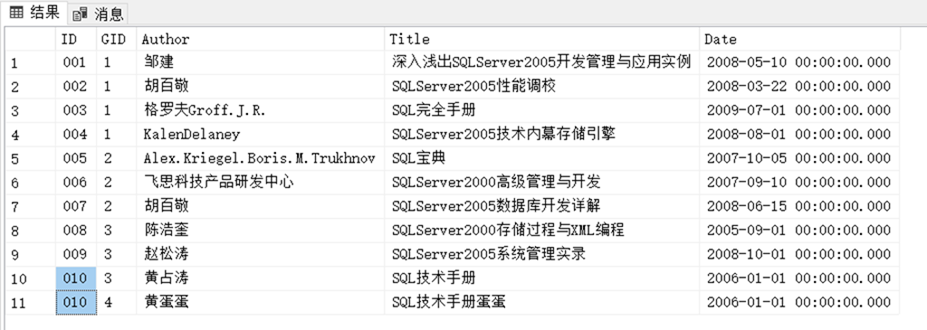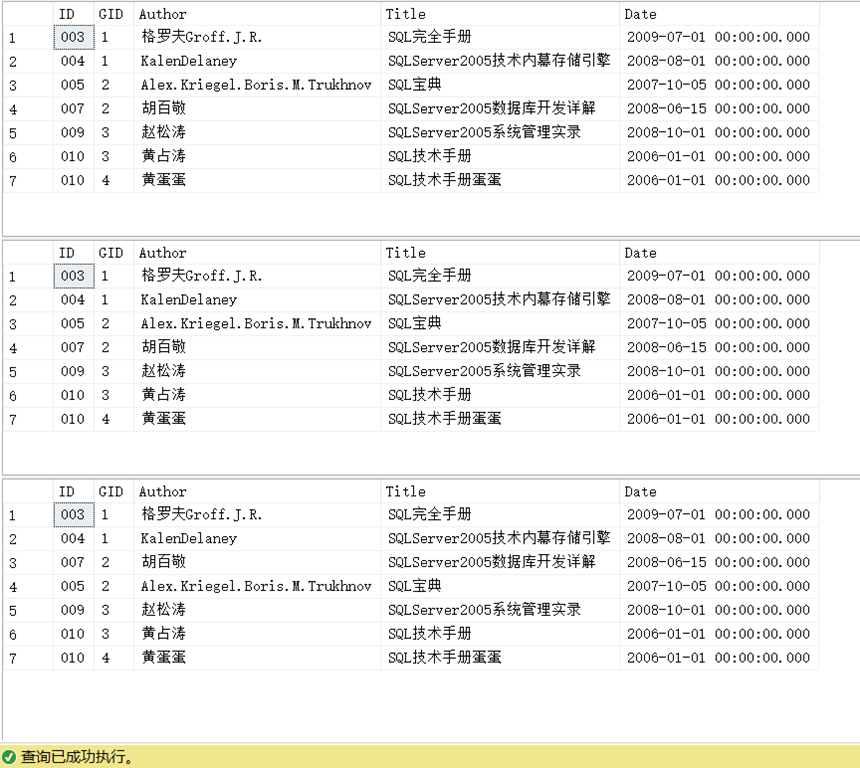SQL语句查询每个分组的前N条记录的实现方法:
1、生成测试数据: #T
if object_id('tempdb.dbo.#T') is not null drop table #T;
create table #T (ID varchar(3), GID int, Author varchar(29), Title varchar(39), Date datetime); insert into #T select '001', 1, '邹建', '深入浅出SQLServer2005开发管理与应用实例', '2008-05-10' union all select '002', 1, '胡百敬', 'SQLServer2005性能调校', '2008-03-22' union all select '003', 1, '格罗夫Groff.J.R.', 'SQL完全手册', '2009-07-01' union all select '004', 1, 'KalenDelaney', 'SQLServer2005技术内幕存储引擎', '2008-08-01' union all select '005', 2, 'Alex.Kriegel.Boris.M.Trukhnov', 'SQL宝典', '2007-10-05' union all select '006', 2, '飞思科技产品研发中心', 'SQLServer2000高级管理与开发', '2007-09-10' union all select '007', 2, '胡百敬', 'SQLServer2005数据库开发详解', '2008-06-15' union all select '008', 3, '陈浩奎', 'SQLServer2000存储过程与XML编程', '2005-09-01' union all select '009', 3, '赵松涛', 'SQLServer2005系统管理实录', '2008-10-01' union all select '010', 3, '黄占涛', 'SQL技术手册', '2006-01-01' union all select '010', 4, '黄蛋蛋', 'SQL技术手册蛋蛋', '2006-01-01';
2、表记录查询如下:
select * from #T;
结果:
3、按GID分组,查每个分组中Date最新的前2条记录
(1)用子查询
--1.字段ID唯一时: select * from #T as T where ID in (select top 2 ID from #T where GID=T.GID order by Date desc); --2.如果ID不唯一时: select * from #T as T where 2>(select count(*)from #T where GID=T.GID and Date>T.Date);
(2)使用SQL Server 2005 使用新方法ROW_NUMBER()进行排位分组
select ID, GID, Author, Title, Date from(
select rid=row_number() over (partition by GID order by Date desc), * from #T) as T where rid<=2;

